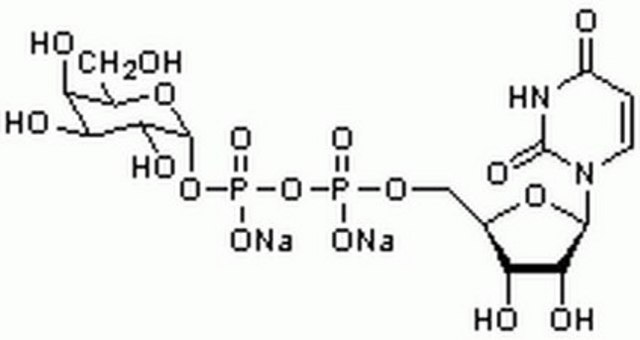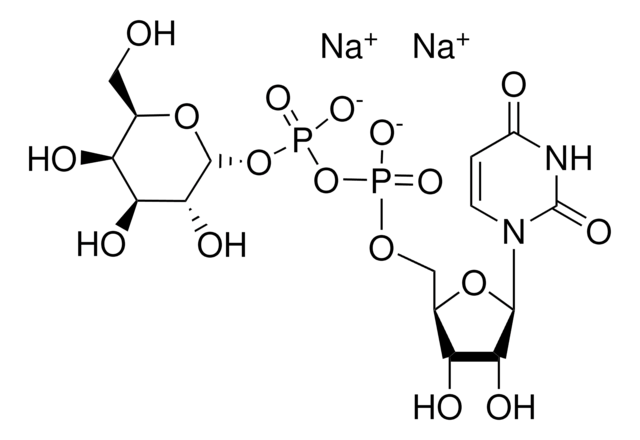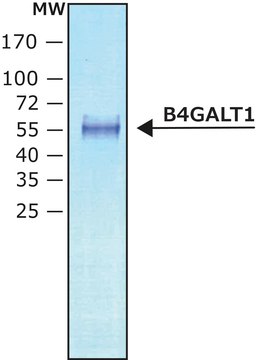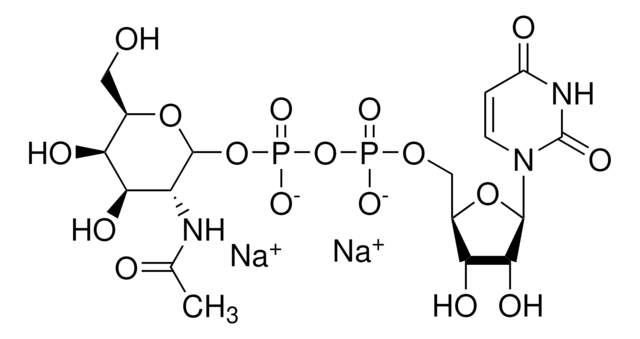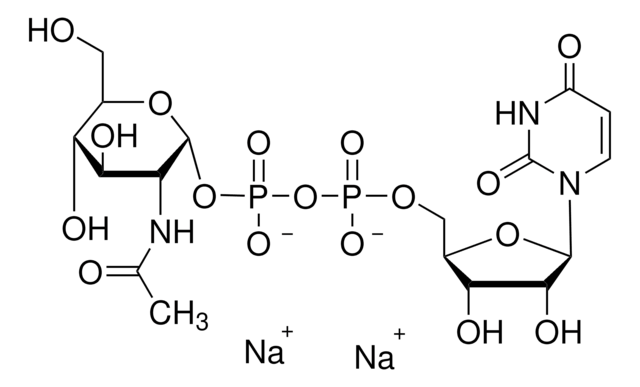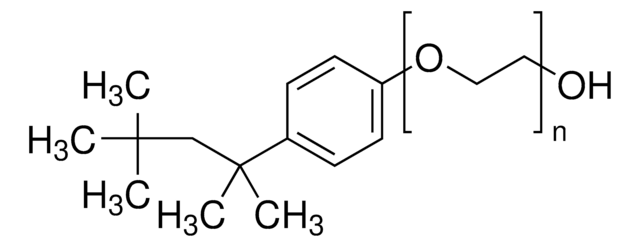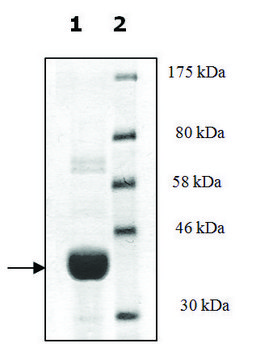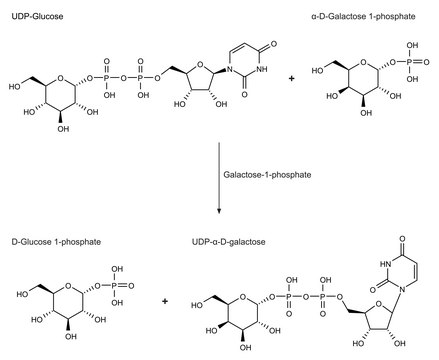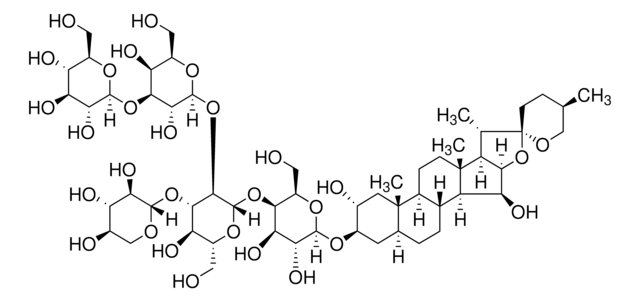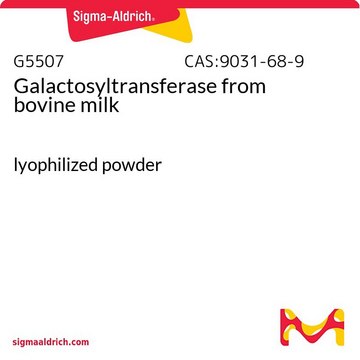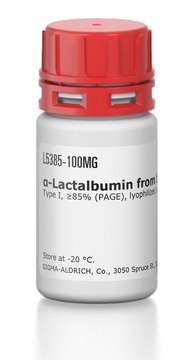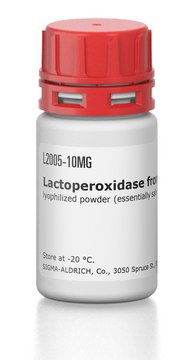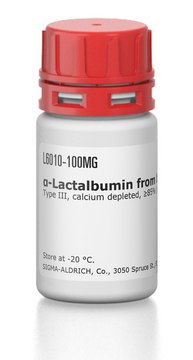Key Documents
Safety Information
G5507
Galactosyltransferase from bovine milk
lyophilized powder
Synonym(s):
Lactose Synthase, UDP-galactose:D-glucose 4-β-galactosyltransferase
Select a Size
¥5,770.79
Select a Size
About This Item
¥5,770.79
Recommended Products
form
lyophilized powder
Quality Level
specific activity
3.0-15.0 units/mg protein (in the presence of adequate α-lactalbumin, without added α-lactalbumin the activity is zero)
composition
Protein, 35-65% modified Warburg-Christian
impurities
≤10 % protein α-lactalbumin
storage temp.
−20°C
Looking for similar products? Visit Product Comparison Guide
1 of 4
This Item | L5385 | L2005 | L6010 |
|---|---|---|---|
| specific activity 3.0-15.0 units/mg protein (in the presence of adequate α-lactalbumin, without added α-lactalbumin the activity is zero) | specific activity - | specific activity ≥200 units/mg protein | specific activity - |
| form lyophilized powder | form lyophilized powder | form lyophilized powder (essentially salt-free) | form lyophilized powder |
| storage temp. −20°C | storage temp. −20°C | storage temp. −20°C | storage temp. −20°C |
| impurities ≤10 % protein α-lactalbumin | impurities - | impurities - | impurities - |
| Quality Level 200 | Quality Level 300 | Quality Level 200 | Quality Level 300 |
| composition Protein, 35-65% modified Warburg-Christian | composition - | composition - | composition - |
General description
Application
- in the generation of hyper-galactosylated variant of IgG1[3]
- in β -1,4-galactosyltransferase assay rice root cell extracts[4]
- in the modification of LacNAcQ11 and LacDiNAcQ11 nanofibers[5]
Biochem/physiol Actions
Linkage
Unit Definition
Physical form
Storage Class Code
11 - Combustible Solids
WGK
WGK 3
Flash Point(F)
Not applicable
Flash Point(C)
Not applicable
Personal Protective Equipment
Regulatory Information
Choose from one of the most recent versions:
Certificates of Analysis (COA)
Don't see the Right Version?
If you require a particular version, you can look up a specific certificate by the Lot or Batch number.
Already Own This Product?
Find documentation for the products that you have recently purchased in the Document Library.
Articles
Explore tools for glycosyltransferase synthesis and modification of glycans, such as glycosyltransferases and nucleotide sugar donors.
Enzymatic glycosyltransferase specificity challenges the one enzyme-one linkage concept.
Our team of scientists has experience in all areas of research including Life Science, Material Science, Chemical Synthesis, Chromatography, Analytical and many others.
Contact Technical Service